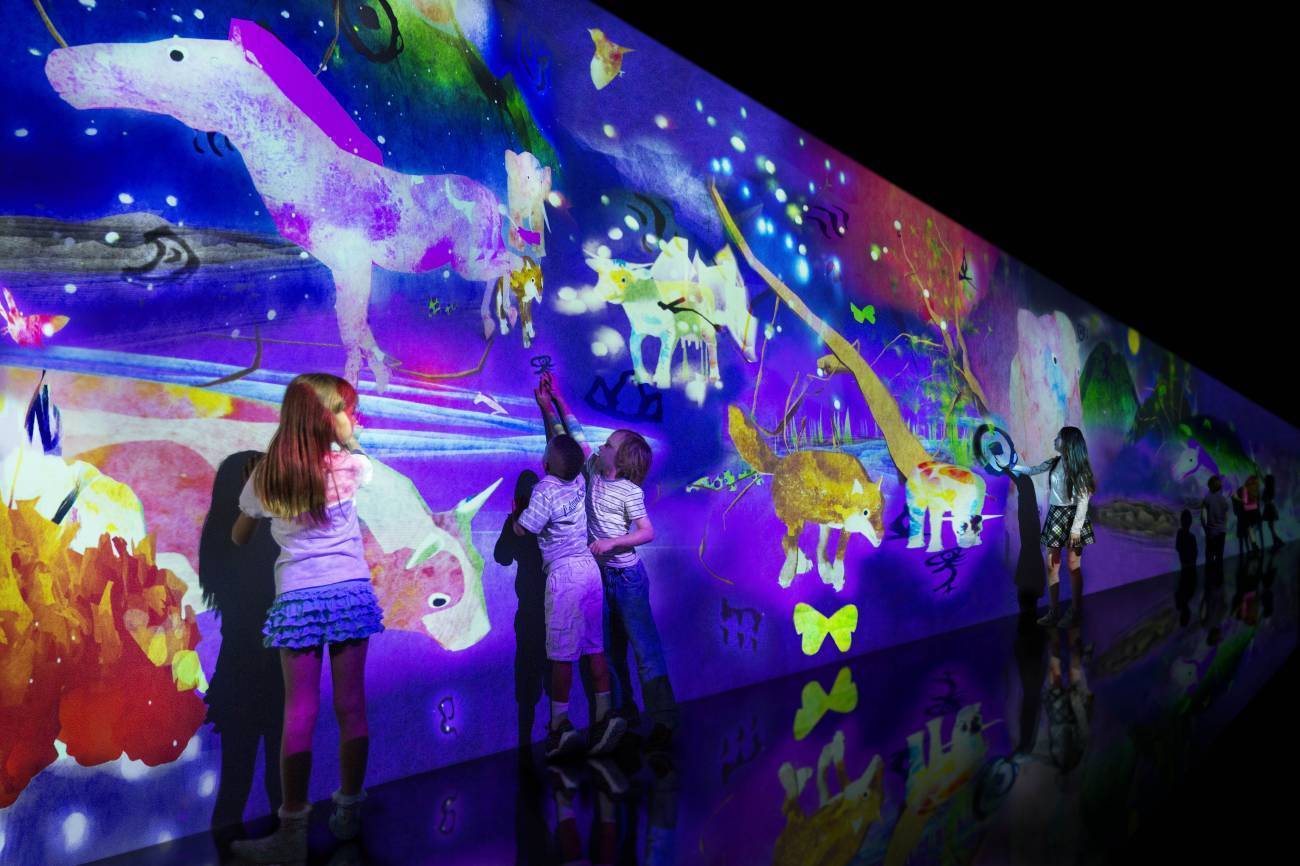TeamLab is a collaborative creative group consisting of various professionals from different fields of practice in the digital society. Their aim for their projects is to achieve a balance between art, science and technology. TeamLab believes that digital technology can expand art and allow digital art can create new relationships between people.

For this reflection I will be talking about one of their recent work in Art Science Museum: Story of the Time when Gods were Everywhere. In this digital artwork, it provokes interaction and crazy beautiful artistic visuals. When the children touches the screen which contains Chinese and Japanese characters. After that, the words then transformed into animals, other organisms and natural elements: wind, rain, trees and mountains . Just like that, a story is being created. With every interaction, a new object is breed from the characters and they co-exist and interact. Children using their touch to keep changing the world, and together creating and experiencing a new story each time.
This work encourage people to rethink the relationship between humans and nature as well as their relationship with the world. It teaches the kids that whatever action is introduced, there is an outcome or possible consequence after it. The paradigm in traditional art has always been to treat the existence of viewers as question-less takers. However, it is different for interactive art. One key principle of interactive art is the connection between the behaviors of the viewers and the influence on the art. Story of the Time when Gods were Everywhere blurs the line between the art and the audience, confusing what is 2D and what is 3D. The large screen allows them to set the feeling of the environment and allow the audience to fully immerse themselves in the screen. The intense and vibrant colors attracts the viewers but also overwhelm them, and providing the kids with a very happy and uplifting environment.
I believe that the constant changing of the interaction between the animals that they breed is very interesting because a new story line is boring with a random interaction from a complete stranger. With smartphones being a big part of kids’ growth, this co-creating experience through a large common digital screen is exactly what kids in the 21st century needs. The main aim of the work is for the children to enjoy moving their bodies about freely in a shared space, interacting with other children, collaboratively creating in a “co-creative” experience, and creating an artwork and a story. The digital technology paired with visuals are expanding the conception of interactive art today. Furthermore, these techniques can liberate art from a being traditional and one-sided, hence creating this space where both the artist and the audience are contributing the artwork together.
